Win HDD
Posted: November 26, 2010
Threat Metric
The following fields listed on the Threat Meter containing a specific value, are explained in detail below:
Threat Level: The threat level scale goes from 1 to 10 where 10 is the highest level of severity and 1 is the lowest level of severity. Each specific level is relative to the threat's consistent assessed behaviors collected from SpyHunter's risk assessment model.
Detection Count: The collective number of confirmed and suspected cases of a particular malware threat. The detection count is calculated from infected PCs retrieved from diagnostic and scan log reports generated by SpyHunter.
Volume Count: Similar to the detection count, the Volume Count is specifically based on the number of confirmed and suspected threats infecting systems on a daily basis. High volume counts usually represent a popular threat but may or may not have infected a large number of systems. High detection count threats could lay dormant and have a low volume count. Criteria for Volume Count is relative to a daily detection count.
Trend Path: The Trend Path, utilizing an up arrow, down arrow or equal symbol, represents the level of recent movement of a particular threat. Up arrows represent an increase, down arrows represent a decline and the equal symbol represent no change to a threat's recent movement.
% Impact (Last 7 Days): This demonstrates a 7-day period change in the frequency of a malware threat infecting PCs. The percentage impact correlates directly to the current Trend Path to determine a rise or decline in the percentage.
| Threat Level: | 10/10 |
|---|---|
| Infected PCs: | 12 |
| First Seen: | November 29, 2010 |
|---|---|
| Last Seen: | January 8, 2020 |
| OS(es) Affected: | Windows |
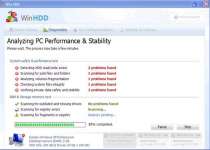 Win HDD, or WinHDD, is a rogue disk defragmenter tool that uses false error messages to make alarming allegations of detecting serious problems on your Windows Registry, system memory, and hard drive. Win HDD reports uses these false error messages to steal money from non-technical computer users. Win HDD is a clone of HDD Defragmenter and HDD Control. Win HDD may be installed in your computer system through a Trojan or you may have unknownly clicked on a malware-ridden link on a popular social network.
Win HDD, or WinHDD, is a rogue disk defragmenter tool that uses false error messages to make alarming allegations of detecting serious problems on your Windows Registry, system memory, and hard drive. Win HDD reports uses these false error messages to steal money from non-technical computer users. Win HDD is a clone of HDD Defragmenter and HDD Control. Win HDD may be installed in your computer system through a Trojan or you may have unknownly clicked on a malware-ridden link on a popular social network.
Once infected with WinHDD, your PC will display fake "critical error" messages stating that
your hard drive is unreadable or damaged. What's worst, Win HDD prevents you from opening other Windows programs or downloading anything from the Web so you're left at the mercy of the bogus defragmenter. Win HDD also has the ability to block some anti-virus programs. This is just part of a Win HDD's scam to force you to purchase its full version. Even if you purchase Win HDD, it will not fix your computer problems because Win HDD is the source of the problem.
Once you click on Win HDD's fake error messages, you'll be redirected to a scam website to purchase Win HDD's full version.
Win HDD is also capable of launching fake system scans and display erroneous scan results. Do not let Win HDD make you its prey and use reliable anti-spyware/anti-virus program that will cut through Win HDD's blocking capabilities.
Use SpyHunter to Detect and Remove PC Threats
If you are concerned that malware or PC threats similar to Win HDD may have infected your computer, we recommend you start an in-depth system scan with SpyHunter. SpyHunter is an advanced malware protection and remediation application that offers subscribers a comprehensive method for protecting PCs from malware, in addition to providing one-on-one technical support service.
* See Free Trial offer below. EULA and Privacy/Cookie Policy.
Why can't I open any program including SpyHunter? You may have a malware file running in memory that kills any programs that you try to launch on your PC. Tip: Download SpyHunter from a clean computer, copy it to a USB thumb drive, DVD or CD, then install it on the infected PC and run SpyHunter's malware scanner.
Technical Details
File System Modifications
Tutorials: If you wish to learn how to remove malware components manually, you can read the tutorials on how to find malware, kill unwanted processes, remove malicious DLLs and delete other harmful files. Always be sure to back up your PC before making any changes.
The following files were created in the system:%TEMP%\98d56f.exe
File name: 98d56f.exeSize: 354.3 KB (354304 bytes)
MD5: 1340ad2e30a4143edba50f3a8de647ba
Detection count: 71
File type: Executable File
Mime Type: unknown/exe
Path: %TEMP%
Group: Malware file
Last Updated: January 8, 2020
Additional Information
| # | Message |
|---|---|
| 1 | Critical Error
Windows can't find hard disk space. Hard drive error |
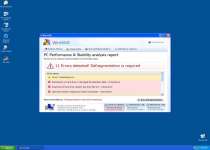
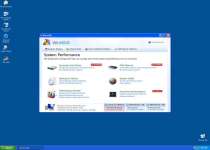
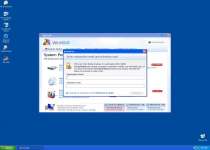
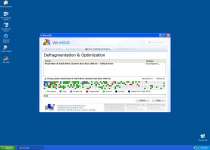
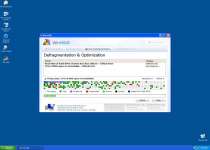
These instructions worked for us to a point - there were still prompts, but I was then at least able to install extra antivirus to remove
To me, not using the administrator account is probably the biggest change for most users. We are all used to using an administrator account on Windows, and switch to a Standard User account is a big change for most. While it may be a big change, it is an important part of security your Windows OS. Making the change can prevent alot of installations from happening behind the scenes, as well as protect changes to your system folders.